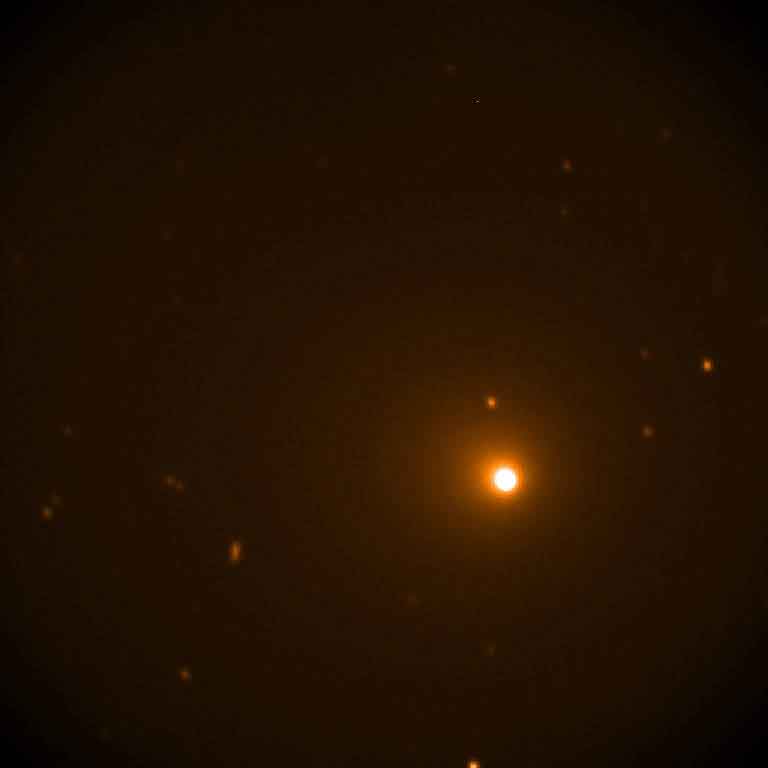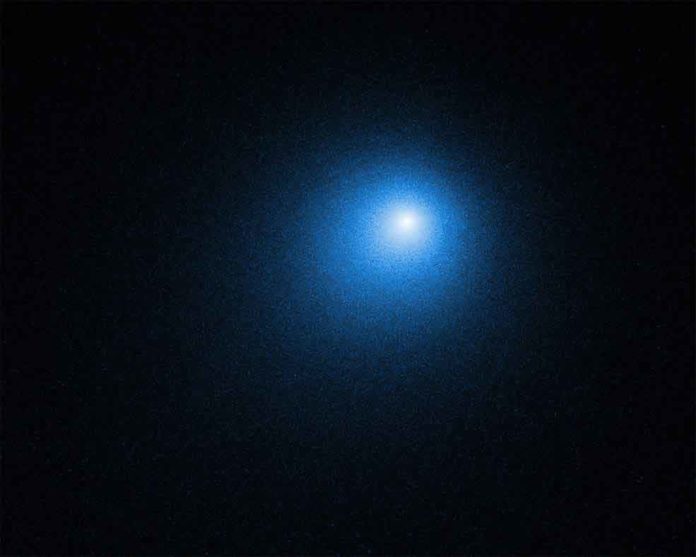On Dec. 13, the brightest comet 46P/Wirtanen passed 7.4 million miles (12 million kilometers) from Earth. On this event, NASA’s Hubble Space Telescope captured it from multiple angles.
In this visible light image, the comet’s nucleus is covered up in the center of a fuzzy glow from the comet’s coma. The coma is a cloud of gas and dust that the comet has catapulted amid its go through the internal solar system because of warming from the Sun. To make this composite picture, the color blue was connected to high-resolution grayscale exposures gained from the rocket’s Wide Field Camera 3 (WFC3) instrument.
The internal part of a comet’s coma is typically not available from Earth. The close flyby of comet 46P/Wirtanen enabled astronomers to consider it in detail. They consolidated the one of a kind abilities of Hubble, NASA’s Chandra X-beam Observatory and the Neil Gehrels Swift Observatory to examine how gases are released from the nucleus, what the comet’s ices are made out of, and how gas in the coma is synthetically adjusted by sunlight and solar radiation.
NASA’s Stratospheric Observatory for Infrared Astronomy, SOFIA, took this image of the comet on Dec. 16 and 17 when the aircraft was flying at 40,000 feet.

Credits: NASA/SOFIA
Comet 46P/Wirtanen made its closest approach to Earth on Dec. 16, when it passed just over 7 million miles (11 million kilometers) from our planet, about 30 times farther away than the Moon. Although its close approach is valuable for making science observations from Earth, and it is the brightest comet of 2018, 46P/Wirtanen is only barely visible to the unaided eye even where the sky is very dark. It is best viewed through binoculars or a telescope.
Comet 46P/Wirtanen orbits the Sun once every 5.4 years, much quicker than the 75-year orbit of the more famous comet Halley. Most of its passes through the inner solar system are much farther from Earth, making this year’s display particularly notable.
